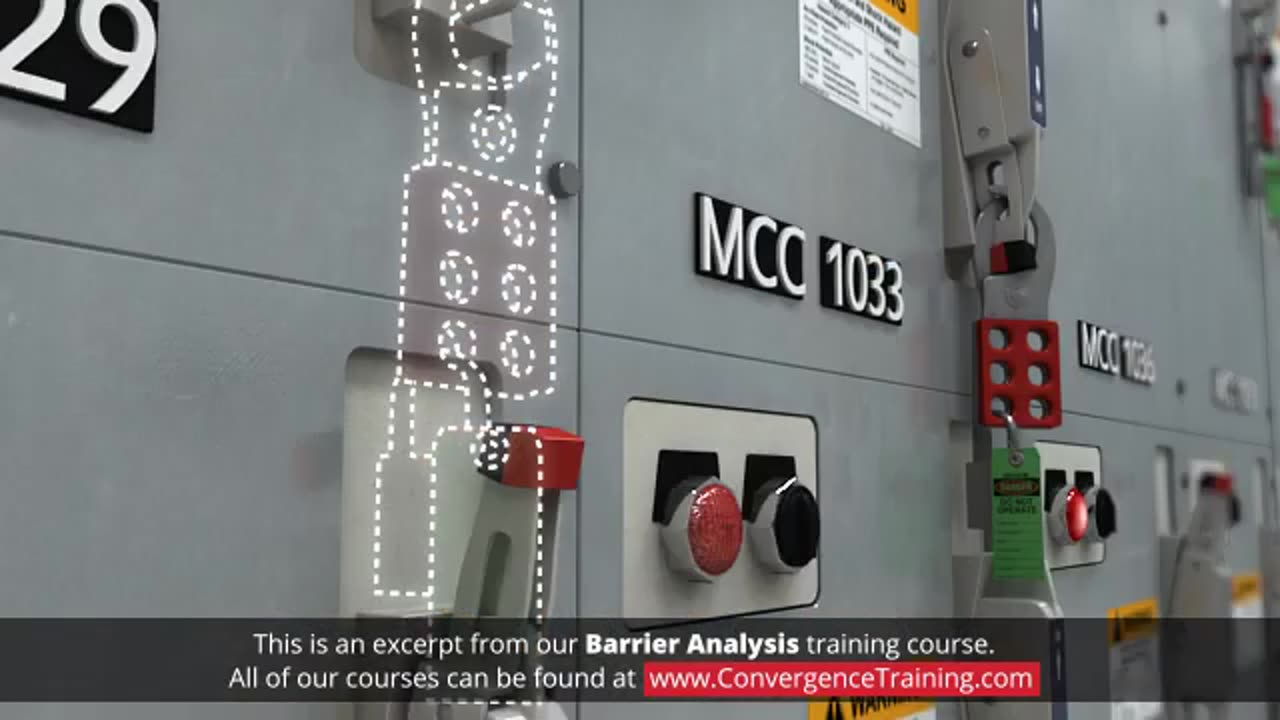Premium Only Content

How to Perform a Barrier Analysis
**Barrier Analysis** is a powerful technique used to identify and evaluate the barriers that could prevent an accident or hazard from occurring. It is widely used in safety management, root cause analysis, and risk assessment processes. Below is a step-by-step guide to performing a **Barrier Analysis**:
---
### **Step 1: Define the Problem or Incident**
- Clearly state the problem, accident, or undesired event you are analyzing.
- Include key information such as:
- What happened (or could happen)?
- When and where did it occur (or might it occur)?
- Who or what was involved?
---
### **Step 2: Identify the Hazards**
- Pinpoint the potential or actual hazards associated with the event or process.
- **Example:** A chemical spill poses hazards like toxic fumes, environmental contamination, or physical harm.
---
### **Step 3: Identify the Targets**
- Determine who or what is at risk from the hazard (the "target").
- **Example:** Workers, the public, the environment, or equipment could be targets.
---
### **Step 4: Identify the Barriers**
- List all existing or potential barriers that can prevent the hazard from reaching the target. Barriers are measures, controls, or safeguards designed to:
- Eliminate the hazard.
- Reduce the likelihood of occurrence.
- Minimize the severity of consequences.
Barriers can be categorized into:
1. **Physical Barriers**: Fences, protective equipment, containment systems, etc.
2. **Procedural Barriers**: Safety protocols, checklists, training, etc.
3. **Administrative Barriers**: Rules, permits, signage, management controls, etc.
4. **Human Barriers**: Actions of trained personnel or operators.
- **Example:** For a chemical spill, barriers could include spill containment systems, emergency response plans, and proper PPE.
---
### **Step 5: Evaluate the Barriers**
- Assess each barrier's **effectiveness** in preventing the hazard or mitigating its consequences:
1. **Are the barriers adequate?** Check their design, implementation, and maintenance.
2. **Are there gaps or weaknesses?** Determine if any barriers are missing, poorly implemented, or failing.
3. **Are barriers independent?** Consider whether multiple barriers rely on the same factor (common cause failure).
---
### **Step 6: Analyze Barrier Failures (if applicable)**
- If an incident occurred, evaluate how barriers failed or were bypassed. Ask:
- Were the barriers properly implemented?
- Were the barriers maintained or tested regularly?
- Did human error or unexpected circumstances undermine the barriers?
---
### **Step 7: Propose Improvements or Additional Barriers**
- Based on your evaluation, identify new or enhanced barriers to address weaknesses.
- Consider redundancy: Add multiple layers of barriers for critical hazards.
- Address organizational and human factors: Ensure training, communication, and oversight are adequate.
---
### **Step 8: Document and Communicate Findings**
- Record the analysis in a clear and structured format for review and implementation.
- Use tools like **Barrier Diagrams** or **Bowtie Diagrams** to visually represent hazards, barriers, and their relationships.
- Communicate findings to all relevant stakeholders, including management and workers.
---
### **Step 9: Implement and Monitor Changes**
- Implement the recommended improvements and ensure they are integrated into safety management systems.
- Continuously monitor the barriers' performance and effectiveness through audits, inspections, and feedback.
---
### **Example of a Barrier Analysis**
#### Scenario: Chemical Spill in a Warehouse
1. **Hazard**: Hazardous chemical leak.
2. **Target**: Workers, environment, and equipment.
3. **Existing Barriers**:
- Spill containment trays (physical).
- Regular safety training (procedural).
- Emergency response plan (administrative).
4. **Weakness Identified**:
- Training not updated for new employees.
- Containment trays were damaged and not replaced.
5. **Recommendations**:
- Schedule regular inspections of containment systems.
- Develop a robust onboarding training program for new hires.
- Add secondary barriers like automatic chemical shutoff valves.
---
Barrier Analysis is most effective when used as part of a broader risk assessment framework, such as **Root Cause Analysis (RCA)** or **Hazard Identification (HAZID).**
-
 6:54
6:54
HSESafetyInformation
7 months ago6 Must Try Breakfast recipes By Food Fusion
351 -
 3:14:39
3:14:39
TimcastIRL
4 hours agoTrump DOJ Indicts James Comey, The ARRESTS Have BEGUN | Timcast IRL
268K260 -
 LIVE
LIVE
SpartakusLIVE
5 hours ago#1 Hulking MASS squashes NOOBS for viewers’ DELIGHT
721 watching -
 1:32:21
1:32:21
The Charlie Kirk Show
4 hours agoTHOUGHTCRIME Ep. 98 — The Comey Indictment? Antifa Agenda? Charlie and the Cubs?
72.7K46 -
 1:04:56
1:04:56
Sarah Westall
4 hours agoPolitical Assassinations, Targeted Hit Lists - Manufactured Chaos w/ Harley Schlanger
39.8K11 -
 1:11:31
1:11:31
Flyover Conservatives
10 hours agoThe “J Walker” Secret: One Daily Habit That Shifts an Entire City - Tammy Hotsenpiller | FOC Show
32K2 -
 2:12:02
2:12:02
Mally_Mouse
7 hours ago🎮Throwback Thursday! Let's Play: Wii Sports Resort!
27.7K2 -
 LIVE
LIVE
Akademiks
4 hours agoATLANTA IS BACK. Young Thug and YFN best buddies now. ATL backs Thug officially!
1,242 watching -
 5:40:35
5:40:35
Reolock
5 hours agoWoW Classic Hardcore | 3 LEVELS REMAIN
25.9K3 -
 3:00:23
3:00:23
Sgt Wilky Plays
5 hours agoThirst Trap Thursday | Regiment Donor Drive
23.7K